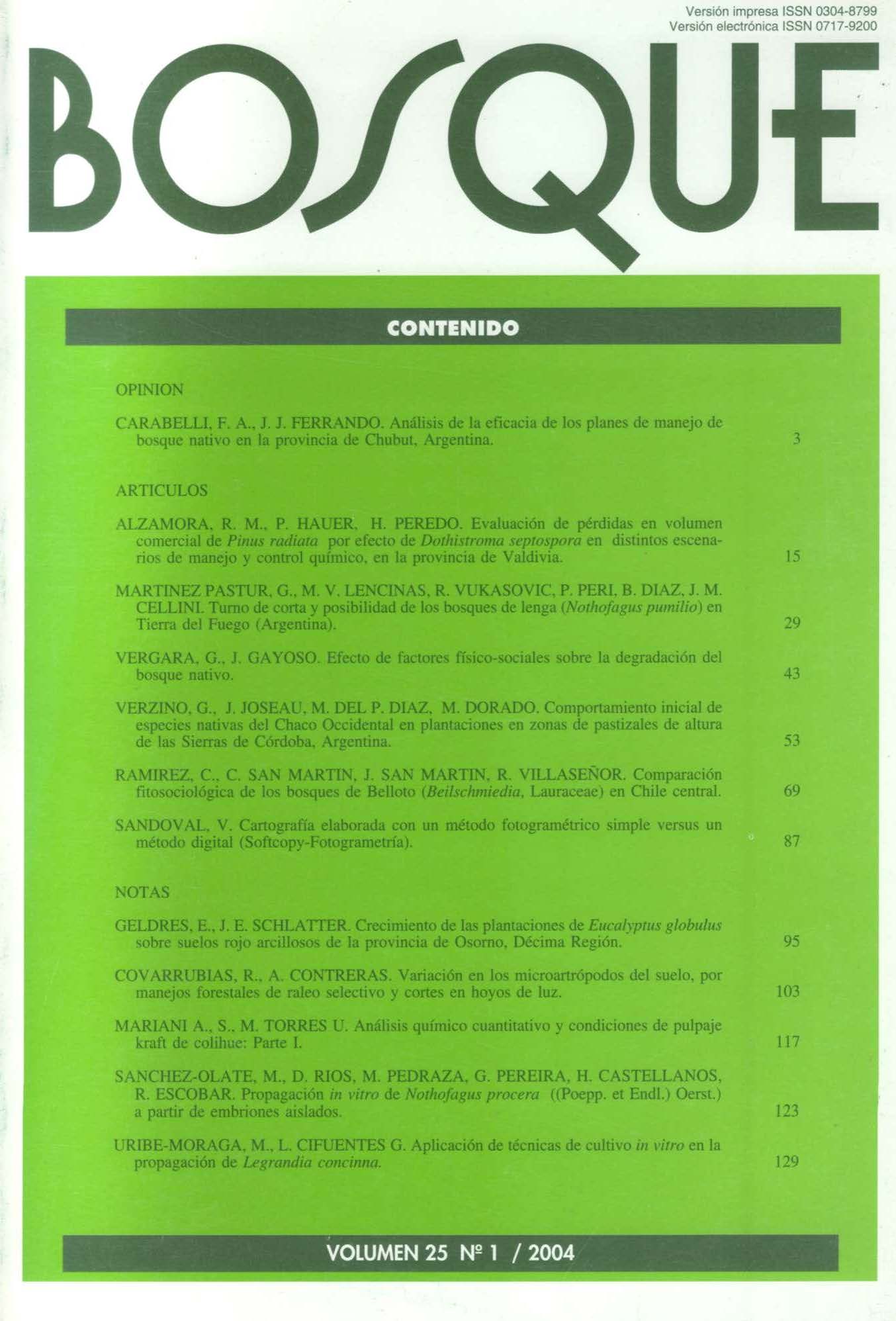Phytosociological comparisons of Belloto (Beilschmiedia, Lauraceae) forests in central Chile
Main Article Content
Abstract
Beilschmiedia miersii (Gay) Kosterm. (Belloto del Norte) and Beilschmiedia berteroana (Gay) Kosterm. (Belloto del Sur) are sclerophyllous trees of the family Lauraceae that are endemic to central Chile. They form mixed evergreen forests of azonal character and have a fragmented distribution. The Belloto del Norte forest grows in the coastal zone of the sclerophyllous forest region, while the Belloto del Sur forest grows in the pre-mountain Andean zone of the temperate deciduous forest region of central Chile. A phytosociological comparison of these forests was accomplished using a vegetation table formed by 18 vegetation samples taken in representative stands of both forests. The floristic similarity between the forests was so low that they could be differentiated into two plant associations, which was confirmed by a multivariate statistical analysis of classification and ordination. Although the Belloto del Norte Forest has a greater floristic richness, it is due to the annual alochtonous undergrowths. Woody plants and perennial weeds dominate the biological spectrum of both communities. The Belloto del Sur forest appears to be more floristically homogeneous. The name Nothofago-Beilschmiedietum berteroanae ass. nova was proposed for the sinotaxonomical classification of the Belloto del Sur forest, while the Belloto del Norte forest was named Beilschmiedietum miersii Schmith. Despite the fact that both forest associations are currently represented in the System of Wild Protected Areas by the government of Chile (SNASPE), they are endangered. Therefore, this study intends to serve as the basis for a future ecological restoration of the forests.

